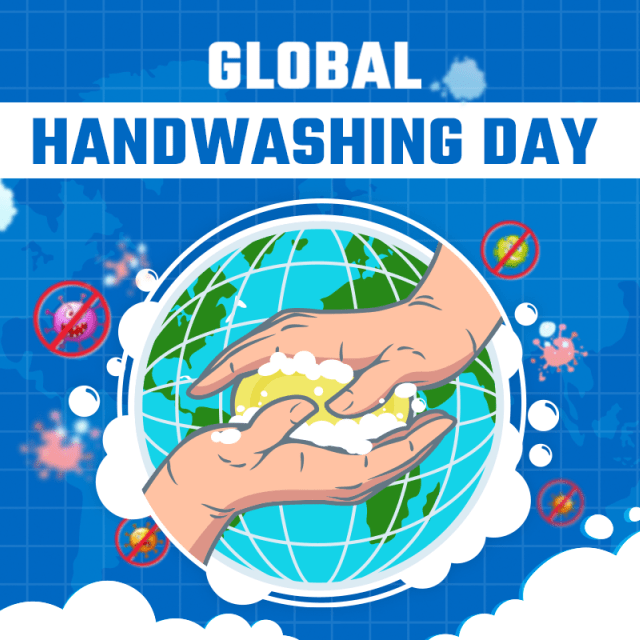Every October 15th, people around the world celebrate a seemingly simple yet profoundly important day—Global Handwashing Day. Established by the Global Handwashing Partnership in 2008, this international day aims to raise awareness about the importance of handwashing with soap. This routine action, repeated multiple times daily, stands as one of the most cost-effective health interventions in human history.

The Remarkable History of Handwashing
Interestingly, the importance of handwashing was not always recognized. In the 1840s, Hungarian physician Dr. Ignaz Semmelweis observed that the mortality rate from puerperal fever was significantly higher in women delivered by doctors compared to those delivered by midwives. He deduced that doctors moving directly from dissection rooms to delivery wards carried "cadaverous particles" on their hands, causing infections. When he insisted that doctors wash their hands with a chlorinated lime solution, maternal mortality rates plummeted from 18% to 2%.
However, his discovery faced strong resistance from the medical community, leading to Semmelweis's expulsion from Vienna. The importance of handwashing only gained gradual acceptance after scientists like Louis Pasteur and Joseph Lister established the germ theory. Today, it's difficult to imagine a world where doctors didn't wash hands before surgery, yet now it's a fundamental requirement of medical practice.
Why is Handwashing So Crucial?

Our hands serve as major transportation hubs for microorganisms. Research indicates that an average of 150 different species of bacteria inhabit each hand, with numbers ranging from 10,000 to 10 million. While not all these microorganisms are harmful, they include pathogens that can cause diarrhea, respiratory infections, and skin and eye infections.
Washing hands with soap disrupts and removes germs and viruses. Soap molecules have a unique structure—one end is hydrophilic (water-attracting), the other hydrophobic (water-repelling). When we rub our hands under water, the hydrophobic end inserts itself into the lipid membranes of viruses and bacteria, breaking them apart, while the hydrophilic end helps rinse these fragments away. This simple process can reduce diarrheal diseases by approximately 30-48% and respiratory infections by about 20%.
During the COVID-19 pandemic, the importance of handwashing reached unprecedented recognition. The World Health Organization emphasized that frequent handwashing, alongside mask-wearing and social distancing, was a key measure to prevent virus transmission.
Proper Handwashing Technique

While seemingly straightforward, correct technique ensures effectiveness:
1.Wet hands with running water: Use clean, running water to thoroughly wet hands. You can ensure proper hygiene by installing bathroom vanities with integrated sinks in homes and commercial spaces, making handwashing more accessible.
2.Apply sufficient soap: Use enough soap to cover all surfaces of both hands.
3.Scrub for at least 20 seconds: Include palms, backs of hands, between fingers, backs of fingers, thumbs, fingertips, and wrists.
4.Rinse thoroughly: Rinse hands completely under running water.
5.Dry with a clean towel: Or air dry.
Particular attention should be paid to a common mistake: insufficient washing time. Singing the "Happy Birthday" song twice takes about 20 seconds, providing a simple time reference.
Global Handwashing Status and Challenges

Despite handwashing's undeniable importance, access to handwashing facilities remains uneven worldwide. According to UN data, approximately 3 billion people globally lack basic handwashing facilities, with three-quarters of the population in the poorest countries lacking soap and water at home.
This inequality becomes particularly evident during crises. In refugee camps, conflict zones, and after natural disasters, shortages of clean water and soap often lead to outbreaks of waterborne diseases like cholera.
Furthermore, cultural and social norms influence handwashing behaviors. In some communities, handwashing may not be viewed as necessary or prioritized. Changing these deeply ingrained cultural habits requires sensitive and sustained educational efforts.
Strategies for Cultivating Handwashing Habits
Establishing lasting handwashing habits requires a multi-pronged approach:
Education is Key: Starting from kindergarten, teaching handwashing importance through games and songs helps children develop lifelong habits.
Infrastructure Improvement: Ensuring stable access to handwashing facilities—particularly reliable soap and clean water supplies—in homes, schools, healthcare facilities, and public places.
Social Norms Shaping: When handwashing is perceived as a social expectation, compliance increases. Role modeling by public figures and community leaders is particularly important.
Innovative Solutions: In resource-limited areas, low-cost solutions like "tippy-taps" (foot-operated handwashing stations) can improve access to handwashing facilities.
Beyond Individual Health
Handwashing extends beyond personal health. When most people in a community regularly wash their hands, it creates a "herd immunity" effect, reducing pathogen transmission throughout the community. This particularly helps protect those with weaker immune systems, such as the elderly, infants, and people with chronic illnesses.
Moreover, good hand hygiene can reduce the need for antibiotics, thereby combating the growing problem of antimicrobial resistance. Simple diarrheal and respiratory infections, if uncontrolled, often require antibiotic treatment. Reducing the incidence of these infections directly decreases antibiotic use.
Our Shared Responsibility
On Global Handwashing Day, we are reminded that keeping hands clean is not just a personal habit but a social responsibility. In our globalized era, where pathogens can cross continents within hours, everyone's hand hygiene habits are interconnected with global public health.
We can start with ourselves, ensuring we and our children develop proper handwashing habits. We can advocate for adequate handwashing facilities in workplaces and public spaces. We can support projects improving global water and sanitation infrastructure.
Conclusion
Global Handwashing Day reminds us that sometimes the most powerful solutions are also the simplest. Handwashing—this small action—requires no expensive technology or complex training, yet it saves lives, reduces healthcare burdens, and promotes socioeconomic development. This Global Handwashing Day, let us recommit to integrating this simple yet powerful habit into our daily lives and encourage others to do the same. Because clean hands are not just healthy hands; they are hands that care, respect, and wisdom.
When we extend our hands, it can be for greeting, for helping, or for creating. Ensuring these hands are clean is the most fundamental respect we can show for ourselves and others. Let's start today, not just on Global Handwashing Day, but every day, giving this simple action the importance it deserves.




